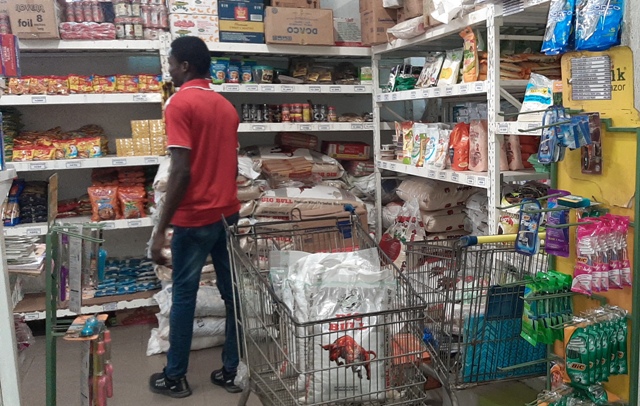TUE, 17 MAY, 2022-theGBJournal | In line with the lingering impact of higher transport costs and increased food demand-supply imbalance, consumer prices maintained an uptrend for the third consecutive month. According to the National Bureau of Statistics (NBS), headline inflation increased by 90bps to 16.82% y/y in April – its highest print since August 2021 (17.01% y/y).
Decomposing the breakdown, we highlight price pressures across the food (+117bps to 18.37% y/y) and core (+26bps to 14.18% y/y) baskets. The headline inflation print is 16bps and 42bps higher than Cordros’ (16.66% y/y) and Bloomberg’s median consensus estimates (16.40% y/y), respectively. On a month-on-month basis, headline inflation rose by 2bps to 1.76% (March: 1.74% m/m) – tracking higher than the 2022 average of 1.65% m/m.
Unsurprisingly, food inflation maintained its uptrend for the third consecutive month, increasing slightly by 1bp to 2.00% m/m in April (March: 1.99% m/m). The increased food prices were consistent with the wider food demand-supply gap.
For proper context, we highlight that the wider food demand-supply gap was underpinned by the increased demand associated with Ramadan and Easter during the review period. In our view, the preceding, combined with (1) high global food prices worsened by the Russia-Ukraine conflict; and (2) elevated transport costs, outweighed the impact of off-season harvests in the review period.
Accordingly, increased Processed food (+6bps to 1.94% m/m) prices outweighed the moderation in the Farm produce (-17bps to 2.18% m/m) subbasket. On a year-on-year basis, food prices increased to their highest level in eight months, expanding by 117bps to 18.37% y/y (March: 17.20% y/y), given broad-based price increase across the Farm produce (+142bps to 18.94% y/y) and Processed food (+109bps to 18.20% y/y) sub-baskets.
Elsewhere, the core inflation reversed the previous month’s downtrend, increasing by 24bps to 1.22% m/m (March: 0.98% m/m) in April. The increase was primarily due to the lingering impact of (1) higher global gas and energy prices and (2) increased taxes in line with the 2021 Finance Act. Consequently, price pressures were broad-based across all the core inflation sub-baskets, with the pressures being most significant in the Utilities (+76bps to 13.08% y/y), Transport (+48bps to 15.85% y/y) and Education (+53bps to 14.40% y/y) sub-baskets.
Notably, the Utilities (+1bps to 1.38% m/m) and transport (+2bps to 1.51% m/m) prices are at their highest points since July 2016. Compared to a year ago, the core inflation increased by 26bps to 14.18% y/y.
Outlook
In May, we expect the elevated diesel prices to continue to have a pass-through impact on food prices across the country, even as the Russia-Ukraine conflict is expected to worsen the food supply-demand imbalance. Besides, we believe that an unfavourable base from the prior year and planting season would support an uptrend in May’s food inflation print. Against that backdrop, we look for a 2.08% m/m increase in the food inflation, with the unfavourable base from the prior year translating to 19.57% y/y.
We expect core inflation to maintain an uptrend in the short term, given the impact of the unabating Russia-Ukraine conflict on global gas and energy prices.
At the same time, we believe the increased taxes in line with the 2021 Finance Act will add another layer of pressure to the core basket. Accordingly, we forecast the core inflation to settle at 1.16% m/m, cascading to a year-on-year print of 14.09%. –With Cordros Research
Twitter-@theGBJournal|Facebook-The Government and Business Journal|email: gbj@govbusinessjournal.ng|govandbusinessj@gmail.com










